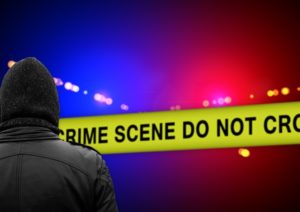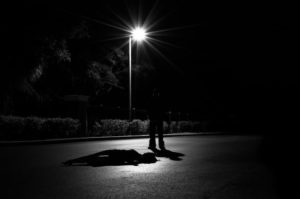Law enforcement communication is a unique language that is both intriguing and practical. One of the most fascinating aspects of this language is the use of police ten codes.
These numerical codes were first introduced in 1937 by Charles Hopper, the communications director with the Illinois State Police, to streamline radio communication.
This article provides an in-depth look into the world of police ten codes in Illinois, their meanings, usage, and significance.
What are 10 Codes?
Police ten codes, also known as ten signals, are numeric codes used to represent common phrases in voice communication among law enforcement officers.
The prefix “ten” in these codes is followed by various numbers that represent different situations or statuses.
While these codes were initially intended to be universal across all law enforcement agencies, variations do exist between different jurisdictions.
Understanding Illinois’s 10 Codes
In Illinois, the ten codes start from 10-0 and go up to 10-42, each representing a specific situation or directive.
For instance, the code 10-0 signifies “Caution,” and 10-1 indicates “Unable to copy — change location.” The code 10-2 represents “Signal good,” and 10-3 is a directive to “Stop transmitting.” The universally recognized 10-4 stands for “Acknowledgement” or “OK”.
Further down the list, 10-7 means an officer is “Out of service,” and 10-8 indicates they’ve returned to service. 10-14 is the code for a “Prowler report,” and 10-32 signifies a “Man with a gun.”
The codes are not limited to crime-related situations only; they also cover routine operations like 10-41, which stands for “Beginning tour of duty,” and 10-42, indicating the “End of tour of duty.”
Check Out: 10 Codes For Georgia
State Police Radio Ten Codes–Over And Out
State police in Illinois use these ten codes as part of their daily operations. They help ensure effective and efficient communication, especially during emergency situations.
Using codes instead of full sentences allows for quicker communication, helping officers respond faster to incidents.
Official Ten-Code List Association of Public Communications Officers (APCO)
The Association of Public Communications Officers (APCO) has an official list of ten-codes that many law enforcement agencies follow. This list includes the codes already mentioned and others such as..
- 10-0 Caution
- 10-1 Unable to copy — change location
- 10-2 Signal good
- 10-3 Stop transmitting
- 10-4 Acknowledgement (OK)
- 10-5 Relay
- 10-6 Busy — stand by unless urgent
- 10-7 Out of service
- 10-8 In service
- 10-9 Repeat
- 10-10 Fight in progress
- 10-11 Dog case
- 10-12 Stand by (stop)
- 10-13 Weather — road report
- 10-14 Prowler report
- 10-15 Civil disturbance
- 10-16 Domestic disturbance
- 10-17 Meet complainant
- 10-18 Quickly
- 10-19 Return to …
- 10-20 Location
- 10-21 Call … by telephone
- 10-22 Disregard
- 10-23 Arrived at scene
- 10-24 Assignment completed
- 10-25 Report in person (meet) …
- 10-26 Detaining subject, expedite
- 10-27 Drivers license information
- 10-28 Vehicle registration information
- 10-29 Check for wanted
- 10-30 Unnecessary use of radio
- 10-31 Crime in progress
- 10-32 Man with gun
- 10-33 Emergency
- 10-34 Riot
- 10-35 Major crime alert
- 10-36 Correct time
- 10-37 (Investigate) suspicious vehicle
- 10-38 Stopping suspicious vehicle
- 10-39 Urgent — use light, siren
- 10-40 Silent run — no light, siren
- 10-41 Beginning tour of duty
- 10-42 Ending tour of duty
- 10-43 Information
- 10-44 Permission to leave … for …
- 10-45 Animal carcass at …
- 10-46 Assist motorist
- 10-47 Emergency road repairs at …
- 10-48 Traffic standard repair at …
- 10-49 Traffic light out at …
- 10-50 Accident (fatal, personal injury, property damage)
- 10-51 Wrecker needed
- 10-52 Ambulance needed
- 10-53 Road blocked at …
- 10-54 Livestock on highway
- 10-55 Suspected DUI
- 10-56 Intoxicated pedestrian
- 10-57 Hit and run (fatal, personal injury, property damage)
- 10-58 Direct traffic
- 10-59 Convoy or escort
- 10-60 Squad in vicinity
- 10-61 Isolate self for message
- 10-62 Reply to message
- 10-63 Prepare to make written copy
- 10-64 Message for local delivery
- 10-65 Net message assignment
- 10-66 Message cancellation
- 10-67 Clear for net message
- 10-68 Dispatch information
- 10-69 Message received
- 10-70 Fire
- 10-71 Advise nature of fire
- 10-72 Report progress on fire
- 10-73 Smoke report
- 10-74 Negative
- 10-75 In contact with …
- 10-76 En route …
- 10-77 ETA (estimated time of arrival)
- 10-78 Need assistance
- 10-79 Notify coroner
- 10-80 Chase in progress
- 10-81 Breathalyzer
- 10-82 Reserve lodging
- 10-83 Work school xing at …
- 10-84 If meeting … advise ETA
- 10-85 Delayed due to …
- 10-86 Officer/operator on duty
- 10-87 Pick up/distribute checks
- 10-88 Present telephone number of …
- 10-89 Bomb threat
- 10-90 Bank alarm at …
- 10-91 Pick up prisoner/subject
- 10-92 Improperly parked vehicle
- 10-93 Blockade
- 10-94 Drag racing
- 10-95 Prisoner/subject in custody
- 10-96 Mental subject
- 10-97 Check (test) signal
- 10-98 Prison/jail break
- 10-99 Wanted/stolen indicated
List of The Top 10 Police Agencies in Illinois That Use 10 Codes to Communicate
There are numerous police agencies in Illinois, varying from state to local level departments. Here are some of the major ones:
- Illinois State Police: This is the statewide law enforcement agency that handles major criminal investigations, traffic patrol, and other statewide law enforcement duties.
- Chicago Police Department (CPD): As one of the largest municipal police departments in the U.S., CPD is responsible for law enforcement in the city of Chicago.
- Cook County Sheriff’s Office: This agency is responsible for law enforcement in Cook County, which includes Chicago and many of its suburbs.
- Springfield Police Department: This is the municipal police force for Springfield, the capital of Illinois.
- Peoria Police Department: This department handles law enforcement duties in the city of Peoria.
- Rockford Police Department: This agency is responsible for law enforcement in Rockford, the third largest city in the state.
- Aurora Police Department: This department oversees law enforcement in Aurora, the second most populous city in Illinois.
- DuPage County Sheriff’s Office: This sheriff’s office handles law enforcement duties in DuPage County, one of the most populous counties in the state.
- Lake County Sheriff’s Office: This is the principal law enforcement agency for Lake County.
- Naperville Police Department: This department is responsible for law enforcement in Naperville, one of the most populous cities in Illinois.
These departments represent a mix of both county and city level law enforcement agencies that work together with the Illinois State Police to maintain order and safety across the state.






